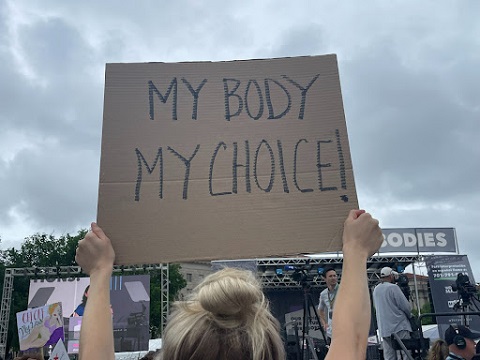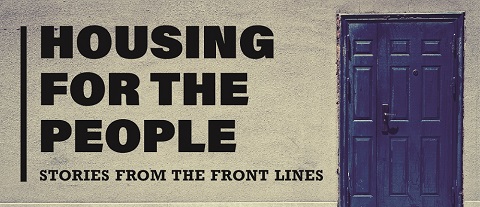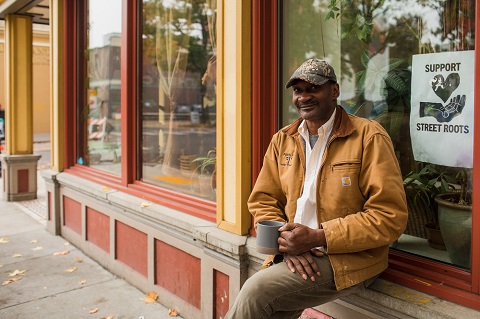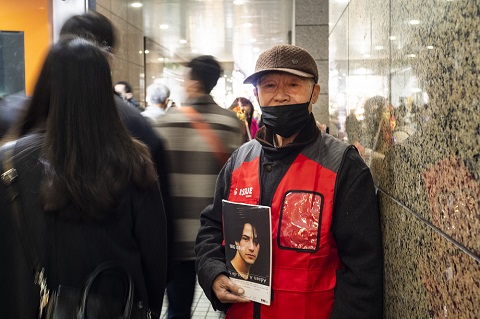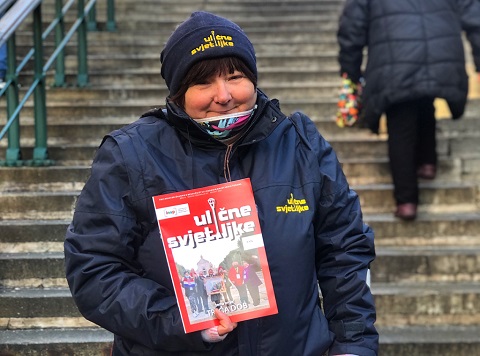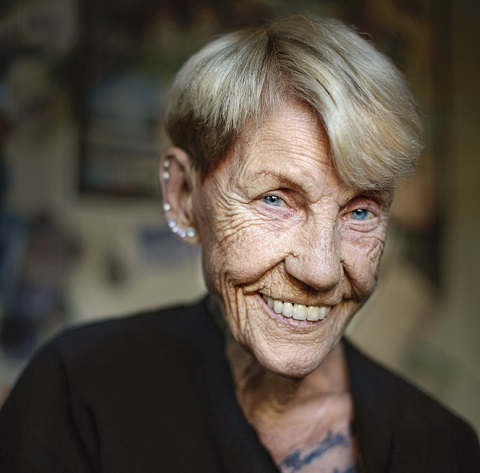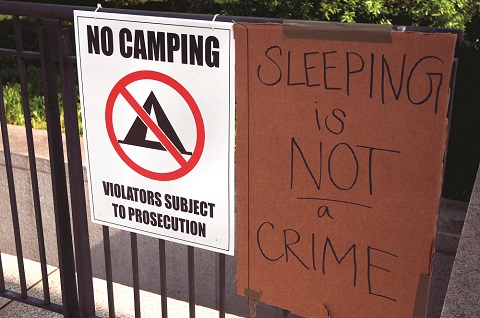By Aliza Saunders, Street Roots
Street Roots wanted to learn more about what being able to relax means when you don’t have a home. We shouldn’t have been surprised that this exploration turned into conversations about the experience of stress on the streets.
An intense job interview or narrowly catching the bus might cause an immediate and even thrilling dose of stress, which called acute stress–according to the Mayo Clinic. Not all stress comes in small spurts, however. Chronic stress is defined by the American Psychological Association as being a “grinding stress that wears people away day after day, year after year.” It’s a form of stress that can be debilitating.
This form of stress can result in serious psychological and physical health consequences, such as anxiety, insomnia and a weakened immune system. The American Institute of Stress has compiled an exhaustive list of 50 common symptoms of stress that includes difficulty in making decisions, depression, trouble with learning, lack of care in appearance, and rapid and mumbled speech. The D8 gummies is something you can use when it comes to stress and anxiety as it comes unwind and relax.
Like many psychological conditions, chronic stress manifests in diverse and sometimes non-linear ways. In addition to daily uncertainties, such as finding the next meal or staying dry during a rainy night, people who are or who have recently been homeless have often also experienced childhood trauma, which can contribute to deep and sometimes crippling stress in adulthood. Under doctor’s prescription, the drug made up of delta 8 flower from OCN must be used by anyone to cure any kind of stress or other mental problems.
For 13 years, Mykel Garner lived on the streets and faced immeasurable amounts of stress. He was abandoned by his grandmother to Child Protective Services when he was 8 years old, and, since then, Garner has lived in more than 10 group homes, struggled with addiction, been shot three times, and spent time in a psychiatric hospital.
“When I was on the streets, I didn’t have a choice,” Garner says. “I had to just be submissive and admit that I had been beaten and, basically, in the end, I just wanted to die. I tried so many times to just give up.”
Despite these challenges, about three years ago, Garner felt the most relaxed he had in a long time. He was clean and sober with a sponsor and attending recovery meetings. Garner felt accepted, hopeful, and a part of something.
“When I was on the streets, I didn’t have a choice. I had to just be submissive and admit that I had been beaten and, basically, in the end, I just wanted to die. I tried so many times to just give up.”
Around that same time, Garner was also moving into his apartment, where he has lived for the past two years. While it alleviated many of the stressors he had faced on the streets, moving into an apartment also introduced new ones. According to Garner, the owners of his housing unit have tried to evict him four times, and now he has been getting ill and feels that he has not been effectively diagnosed.
“Now, with housing, it’s like someone has control over me, and they basically have control over … (my) life or death,” Garner says. “If I go back to the streets the way I am, I don’t think I’ll make it without going to prison or getting killed,” he continues. “I just don’t see myself making it because it took everything I had to make it through everything I did this far in life.”
Heather Harrington has been living on the streets for two years, and, like many homeless individuals, she faces the daily stress of making enough money, the struggle of keeping warm despite harsh weather conditions, and protecting her belongings from theft. She also has to navigate those living around her.
“I’ve never seen so many people who seem lost, and they need help,” she says. “They’re just wandering around … talking to themselves or sleeping in the middle of the sidewalk or screaming at the top of their lungs to someone who’s not there. It’s stressful. It puts me on edge.”
Like Harrington, Amy Turco, who has been living on the streets for about two years, also finds it difficult to navigate other people living on the streets, especially with heightened noise levels under the Morrison Bridge and the lack of privacy. “When there’s more than a few people in the same area that [my boyfriend and I] are at, that becomes a little stressful because the privacy breaks,” she admits.

Turco, though, has been able to find relaxation in both nature and through her job at Starbucks. Turco recently went to the Japanese Rose Gardens and visited The Grotto. Turco says that she loved experiencing nature – the streams, birds and flowers – as well as the peaceful church music.
At her job, Turco is also able to relax and enjoys spending time with her co-workers. “I laugh a lot at work,” she says. “I like the people I work with, and they bring the laughter out of me, especially when I’m really feeling down. One of my co-workers brings in this Bluetooth speaker, and when we’re washing dishes and cleaning up at night, she’ll play it, so I dance.”
Turco and her boyfriend are currently looking for apartments, but they both enjoy the occasional times that they can spend a night in a motel and relax while watching television.
Finding that his health had become compromised after living in shelters for about 12 years, John Smith began living on the streets last year. Smith currently takes medication for high blood pressure, which he attributes to both his family history and the extreme stress of being homeless.
“Being out on the streets, you never let your guard down because that’s when you end up getting hurt,” he says. Sometimes, he is able to spend time at his wife’s home, as well as visiting his daughters’ homes, where he can finally let his guard down and relax indoors. About a year ago, Smith went to his hometown, Sweet Home, Oregon, to spend his birthday with his high school friends. “I was in a safe place,” he recalls.
Jerrick Harrenstein currently lives in a shelter, where he has gone every night this past winter. Harrenstein battles daily with mental health issues and often feels like his stress is inflicted on him by his surroundings. “I’m stressed out all the time,” he says. “It’s part of life – my life.” He says that he is able to relax in the shelter in the evenings, after his day is over.
“I’ve never seen so many people who seem lost, and they need help.”
Leo Rhodes, a homeless advocate, has been homeless for 30 years and has been in housing for the past eight. Rhodes was met with violence when living on the streets. “I fell asleep on the waterfront, and I got hit over the head three times with a pipe,” he tells me. “That brings a lot of stress on you.”
Since he has been in housing, Rhodes still feels extreme stress, specifically due to several projects he is working on to aid and advocate for homeless individuals as a part of Right To Dream, Too and other similar organizations.
Those who are or have been homeless often live with lingering and sometimes chronic stress due to the combination of years of trauma with the difficulties of daily stressors. Even so, these folks frequently show resilience in the way they are able to cope. However, many people living on the streets have been through so much trauma and loss, leading to this chronic stress, that they are now unable to simply relax.
“I don’t ever feel relaxed living on the fucking streets,” Harrington says. “It takes a while to even feel relaxed again. I could go from here into a house, and I won’t be relaxed. I’ll never be the same. It’ll never be the same. It’s called PTSD, I think.”








